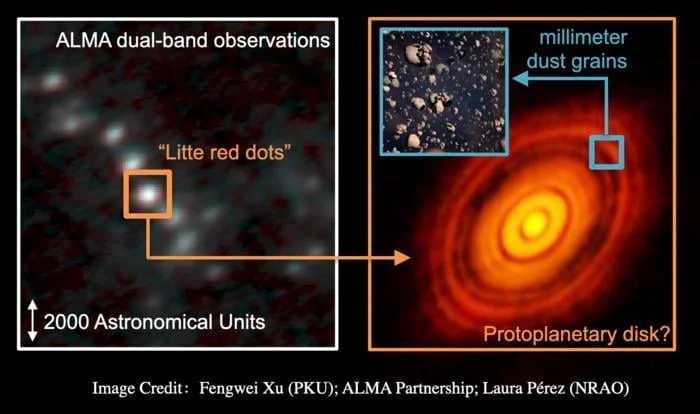
Milky Way’s Galactic Center Teems with Potential Solar Systems: Over 300 Protoplanetary Disks Discovered
For decades, astronomers have been spotting protoplanetary disks – the swirling nurseries of future solar systems – primarily in the calmer regions of our Milky Way. Now, a groundbreaking study reveals a surprising abundance of these disks in the most turbulent part of our galaxy: the Central Molecular Zone (CMZ), near the supermassive black hole Sagittarius A*.
This discovery, detailed in the journal Astronomy & Astrophysics, challenges conventional theories of planet formation. An international team, including researchers from the Kavli Institute for Astronomy and Astrophysics, the Shanghai Astronomical Observatory, and the University of Cologne, used the Atacama Large Millimeter/submillimeter Array (ALMA) to peer through the thick interstellar dust shrouding the CMZ.

The team identified over 500 dense cores, the birthplaces of stars, with over 70% exhibiting unexpectedly “red” spectral signatures. This red color suggests the presence of hidden protoplanetary disks. “We were astonished to see these 'little red dots' cross the whole molecular clouds,” said Fengwei Xu from the University of Cologne’s Institute of Astrophysics, highlighting the unexpected nature of the finding.
Researchers propose two leading explanations. First, the cores might not be homogeneous spheres, but rather conceal compact protoplanetary disks, whose self-absorption at shorter wavelengths causes the reddening. Second, accelerated growth of larger dust grains may mean these cores contain millimeter-sized grains, a size typically found only inside protoplanetary disks. Both scenarios point to the widespread existence of over 300 potential disk-forming systems in just three CMZ clouds.


The discovery offers scientists a rare opportunity to study planet formation under extreme conditions. Located approximately 27,000 light-years away, the CMZ presents a drastically different environment than our solar neighborhood, with molecular gas compressed to densities thousands of times higher.
“It is exciting that we are detecting possible candidates for protoplanetary disks in the galactic center. The conditions there are very different from our neighborhood, and this may give us a chance to study planet formation in this extreme environment,” added Professor Peter Schilke from the University of Cologne.
Future multi-band observations will help refine the understanding of these objects' physical properties, potentially rewriting models of star and planet formation. Can these early disks truly evolve into full-fledged planetary systems in such a harsh environment? Share your thoughts and predictions in the comments below!